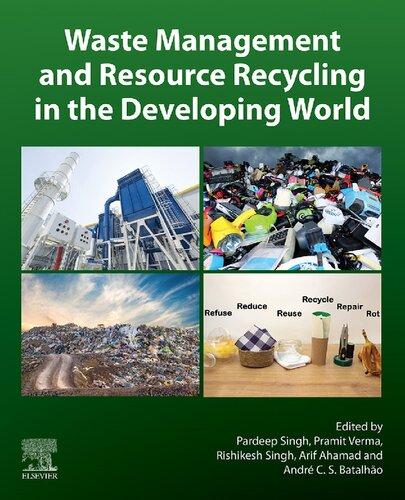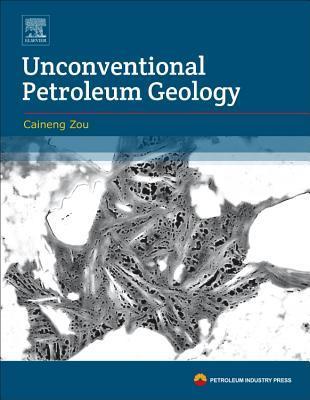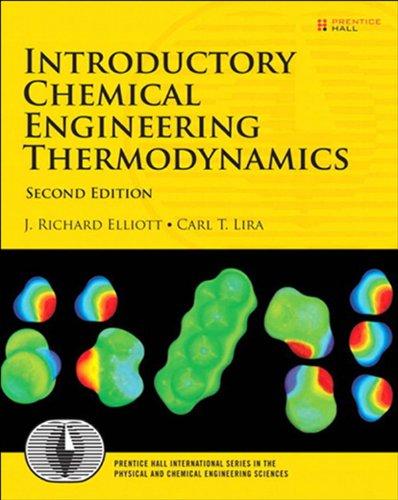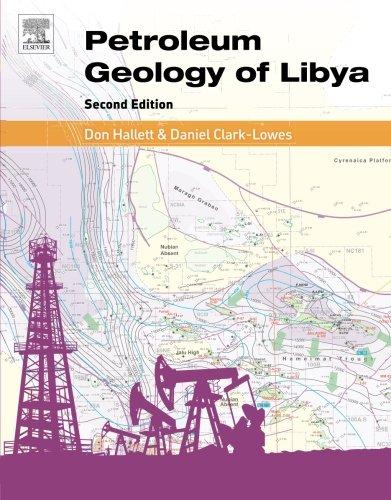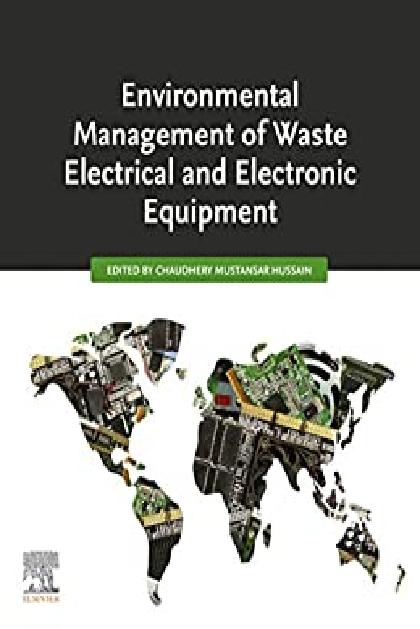WasteManagement intheChemical andPetroleum Industries
SecondEdition
AlirezaBahadori
SouthernCrossUniversity Lismore Australia
Thiseditionfirstpublished2020 ©2020JohnWiley&SonsLtd
EditionHistory
JohnWiley&SonsLtd(1e,2014)
Allrightsreserved.Nopartofthispublicationmaybereproduced,storedinaretrievalsystem,ortransmitted,inanyformorby anymeans,electronic,mechanical,photocopying,recordingorotherwise,exceptaspermittedbylaw.Adviceonhowtoobtain permissiontoreusematerialfromthistitleisavailableat http://www.wiley.com/go/permissions
TherightofAlirezaBahadoritobeidentifiedastheauthorofthisworkassertedinaccordancewithlaw.
RegisteredOffices
JohnWiley&Sons,Inc.,111RiverStreet,Hoboken,NJ07030,USA
JohnWiley&SonsLtd,TheAtrium,SouthernGate,Chichester,WestSussex,PO198SQ,UK
EditorialOffice
TheAtrium,SouthernGate,Chichester,WestSussex,PO198SQ,UK
Fordetailsofourglobaleditorialoffices,customerservices,andmoreinformationaboutWileyproductsvisitusat www.wiley.com
Wileyalsopublishesitsbooksinavarietyofelectronicformatsandbyprint-on-demand.Somecontentthatappearsinstandard printversionsofthisbookmaynotbeavailableinotherformats.
LimitofLiability/DisclaimerofWarranty
Inviewofongoingresearch,equipmentmodifications,changesingovernmentalregulations,andtheconstantflowof informationrelatingtotheuseofexperimentalreagents,equipment,anddevices,thereaderisurgedtoreviewandevaluatethe informationprovidedinthepackageinsertorinstructionsforeachchemical,pieceofequipment,reagent,ordevicefor,among otherthings,anychangesintheinstructionsorindicationofusageandforaddedwarningsandprecautions.Whilethepublisher andauthorshaveusedtheirbesteffortsinpreparingthiswork,theymakenorepresentationsorwarrantieswithrespecttothe accuracyorcompletenessofthecontentsofthisworkandspecificallydisclaimallwarranties,includingwithoutlimitationany impliedwarrantiesofmerchantabilityorfitnessforaparticularpurpose.Nowarrantymaybecreatedorextendedbysales representatives,writtensalesmaterialsorpromotionalstatementsforthiswork.Thefactthatanorganization,website,orproduct isreferredtointhisworkasacitationand/orpotentialsourceoffurtherinformationdoesnotmeanthatthepublisherandauthors endorsetheinformationorservicestheorganization,website,orproductmayprovideorrecommendationsitmaymake.This workissoldwiththeunderstandingthatthepublisherisnotengagedinrenderingprofessionalservices.Theadviceand strategiescontainedhereinmaynotbesuitableforyoursituation.Youshouldconsultwithaspecialistwhereappropriate. Further,readersshouldbeawarethatwebsiteslistedinthisworkmayhavechangedordisappearedbetweenwhenthisworkwas writtenandwhenitisread.Neitherthepublishernorauthorsshallbeliableforanylossofprofitoranyothercommercial damages,includingbutnotlimitedtospecial,incidental,consequential,orotherdamages.
LibraryofCongressCataloging-in-PublicationData
Names:Bahadori,Alireza,author.
Title:Wastemanagementinthechemicalandpetroleumindustries/ AlirezaBahadori(SouthernCrossUniversity,Lismore,NewSouthWales, Australia).
Description:Secondedition.|Hoboken,NJ:JohnWiley&Sons,Inc., [2020]|Includesbibliographicalreferencesandindex.
Identifiers:LCCN2019024462(print)|LCCN2019024463(ebook)|ISBN 9781119551720(cloth)|ISBN9781119551737(adobepdf)|ISBN 9781119551751(epub)
Subjects:LCSH:Petroleumindustryandtrade–Wastedisposal.|Chemical industry–Wastedisposal.|Petroleumrefineries–Wastedisposal.
Classification:LCCTD899.P4B342020(print)|LCCTD899.P4(ebook)| DDC628.5/1–dc23
LCrecordavailableathttps://lccn.loc.gov/2019024462
LCebookrecordavailableathttps://lccn.loc.gov/2019024463
CoverDesign:Wiley
CoverImages:©kessudap/Shutterstock, ©PICHITBO/Shutterstock,©pandemin/Shutterstock
Setin10/12ptTimesLTStdbySPiGlobal,Chennai,India
10987654321
Preface xv
AbouttheAuthor xix
1WastewaterTreatment1
1.1CharacteristicsofWastewater2
1.1.1WastewaterClassifications5
1.1.2WaterPollutionTerminals5
1.1.3SuspendedSolids6
1.1.4HeavyMetals6
1.1.5DissolvedInorganicSolids7
1.1.6ToxicOrganicCompounds7
1.1.7Surfactants7
1.1.8PriorityPollutants9
1.1.9VolatileOrganicCompounds9
1.2TreatmentStages9
1.2.1SourcesofWastewater11
1.2.2DischargeOptionsandQualityRequirements11
1.3EffluentWaterPollutionControl13
1.3.1SpillPreventionandControl14
1.3.2GroundwaterPollutionControl16
1.4TreatmentProcesses18
1.4.1WastewaterPollutionOilTerminals20
1.4.2SimpleGravitySeparation21
1.4.3ResidualSuspendedMatter21
1.4.4SelectionofTreatmentProcesses22
1.5SitingandDesign24
1.5.1AquaticEcosystems25
1.5.2TerrestrialEcosystems25
1.5.3WetlandEcosystems27
1.5.4LandUse28
1.5.5WaterPollutionControl28
1.6SourcesofEffluentinthePetrochemicalIndustry29
1.6.1WaterPollution29
1.6.2CoolingWater29
1.6.3WashingWaterandProcessWater29
1.6.4TypicalPollutantsinthePetrochemicalIndustry29
1.6.5PetrochemicalWasteTreatment30
1.6.6Fertilizer31
1.7EffectofPollution33
1.7.1MajorPollutants33
1.8OlefinPlants34
1.8.1PolymericPlants35
1.8.2PolyvinylChloridePlants36
1.8.3AromaticPlants37
1.9EnvironmentalProtectionforIndustrialWaste37
1.9.1ImportantFactorsinProcessSelection37
1.10ChemicalOxygenDemandinWastewaterSystems44
1.10.1DeterminationofCOD44
1.10.2CalculationofTheoreticalOxygenDemand45
2PhysicalUnitOperations47
2.1FlowMeasurement47
2.2Screening47 2.3Comminution50
2.4GritRemoval50
2.5GravitySeparation51
2.5.1General51
2.5.2Application52
2.5.3Oil–WaterSeparators:GeneralDesignConsiderations53
2.5.4Conventional,RectangularChannel(API)Separators53
2.5.5Parallel-PlateSeparators65
2.5.6OilTraps67
2.5.7OilHoldingBasins68
2.6FlowEqualization68
2.6.1ApplicationandLocation68
2.6.2VolumeRequirements69
2.7Mixing70
2.7.1DescriptionandType70
2.7.2Application70
2.8Sedimentation71
2.8.1SedimentationTheory71
2.8.2ApplicationandType73
2.8.3DesignConsiderations74
2.8.4NumberofBasins75
2.8.5InletArrangements75
2.8.6Short-Circuiting76
2.8.7OutletArrangements76
2.8.8DetentionTime76
2.8.9SurfaceLoadingRate76
2.8.10FactorsAffectingSedimentation76
2.9DissolvedAirFlotation78
2.9.1General78
2.9.2SystemConfiguration79
2.9.3VariablesAffectingDAFEfficiency80
2.9.4TreatabilityTesting80
2.9.5DesignConsiderations81
2.9.6InstrumentsandControl86
2.9.7Piping86
2.9.8ChemicalsFacilities87
2.9.9Material87
2.9.10EstimationofAirConcentrationinDAFSystems87
2.10Granular-MediaFilters93
2.10.1General93
2.10.2FilterTypesandApplications94
2.10.3SystemDesignParameters96
2.10.4CycleTime98
2.10.5VesselsandAppurtenances99
2.10.6InstrumentationandControls100
3ChemicalTreatments103
3.1Introduction103
3.1.1ChemicalPrecipitation103
3.1.2ChemicalCoagulation103
3.1.3ChemicalOxidationandAdvancedOxidation104
3.1.4IonExchange104
3.1.5ChemicalStabilization106
3.2DefinitionandApplication106
3.2.1ActivatedCarbonAdsorption106
3.3ChemicalPrecipitation109
3.4ChemicalFlocculation109
3.4.1DefinitionandApplications110
3.4.2DesignConsiderations112
3.4.3Clarifiers112
3.4.4ChemicalAdditionSystems115 3.5Disinfection116
3.5.1ChemicalAgents116
3.5.2MechanicalMeansofDisinfection116 3.6Chlorination118
3.6.1ChlorineDosages118
3.6.2DesignConsiderations119
3.7WaterMonitoring120
3.7.1DesignConsiderationsforaWaterMonitoringSystem121
3.8On-SitePortableInstrumentsforWaterPollutionControl121
3.8.1AlternativeCurrentColorimeter122
3.8.2OnlineFixedMeasurementorContinuousMonitoring122
3.8.3ContinuousWaterSamplingandClarificationSystem122
3.8.4LaboratoryInstruments122
3.8.5SoilWaterSampling125
3.8.6GroundwaterSampling126
3.9PhysicalExamination126
3.9.1Color126
3.9.2Conductivity127
3.9.3Turbidity128
3.9.4DeterminationofMetals128
3.9.5Polarography128
3.9.6DeterminationofOrganicConstituents129
3.9.7CombustibleGasIndicator130
3.9.8TotalOrganicCarbon130
3.9.9BiochemicalOxygenDemand131
3.9.10ChemicalOxygenDemand131
3.9.11ExaminationofWaterandWastewaterRadioactivity131
3.10AutomatedLaboratoryEquipmentforMonitoringWater andWastewater133
3.10.1LoadingLosses133
3.10.2EmissionstoWater134
4BiologicalTreatments137
4.1Theory137
4.1.1BiologicalActivatedCarbonProcess139
4.1.2BiokineticTheoreticalModel140
4.2BiologicalTreatmentProcesses142
4.2.1MajorDifferencesinAerobicandAnaerobicTreatment144
4.2.2AerobicProcesses146
4.2.3AnaerobicWasteTreatment149
4.2.4Aerobic-Anaerobic(Facultative)WasteTreatment149
4.3ActivatedSludgeUnits150
4.3.1Applications151
4.3.2EffectsofActivatedSludge151
4.3.3FeedComposition152
4.3.4ProcessDesign157
4.3.5DesignConsiderations158
4.4TricklingFilters160
4.4.1TricklingFilterProcessDesign162
4.5RotatingBiologicalContactorSystem163
4.6SewageOxidationPonds164
5WastewaterTreatmentintheUnconventionalOilandGasIndustries167
5.1Background167
5.1.1DissolvedandDispersedHydrocarbonComponents169
5.1.2DissolvedMinerals169
5.1.3ProductionChemicals169
5.1.4ProducedSolids170
5.1.5DissolvedGases170
5.2ToxicityLimitationsofCoalBedWater171
5.3ShaleGasandCSGProducedWater:Treatment,andDisposal174
5.3.1EvaporationPonds174
5.3.2Surface-StreamDisposal174
5.3.3IonExchange176
5.3.4MembraneFiltrationTechnology176
5.3.5Freeze-ThawEvaporation178
5.3.6Adsorption178
5.3.7ChemicalOxidation178
5.3.8Filtration179
5.3.9ConstructedWetlands179
5.3.10ElectrodialysisandElectrodialysisReversal179
5.3.11DeepWellInjectionatDedicatedOnshoreSites180
5.3.12BiologicalAeratedFilters180
5.3.13Macro-porousPolymerExtractionTechnology181
5.3.14ThermalTechnologies181
5.4Re-thinkingTechnologiesforSaferFacing185
5.5WaterTreatmentforOilSandsMining191
5.5.1RecyclingandWaterTreatmentOptions192
5.5.2OilyWaterTreatmentinOilSandsMining193
6WastewaterSewerSystems199
6.1StormWaterSewerSystem200
6.2OilyWaterSewerSystem200
6.3Non-OilyWaterSewerSystem201
6.4ChemicalSewerSystem(s)202
6.4.1DisposalofChemicalSewers202
6.4.2NeutralizationSystems202
6.4.3TypesofChemicalWaste202
6.5SanitarySewerSystem203
6.6SpecialSewerSystems203
6.7EffluentSourcesandDisposal203
6.8ParticularEffluentsinRefineryandPetrochemicalPlants205
6.8.1CausticScrubs(HeavyOils)205
6.8.2DesalterWastewater205
6.8.3FoulorSourWater206
6.8.4SpentCausticSolutions206
6.8.5MTBEorLeadedContaminatedStreams208
6.8.6BenzeneContaminatedStreams208
6.8.7SpentSulfuricAcidProducts209
6.8.8NitrogenBaseComponents210
6.8.9Cyanides210
6.8.10AluminumChloride210
6.8.11Polyelectrolyte210
6.8.12FerricChloride211
6.8.13PhosphoricAcid211
6.8.14HydrofluoricAcid211
6.8.15OtherSpentCatalysts211
6.8.16ChemicalCleaningWaste211
6.8.17SulfurSolidificationandCrushingFacilities,andLoading SystemsDrainage211
6.8.18WaterContainingSolids,EmulsifyingAgents,etc212
6.8.19HeavyViscousOilsDrainage212
6.8.20ToxicMetalContaminatedStreams212
6.8.21SolventProcessesDrainage212
6.8.22TreatingProcessesDrainage212
6.9PetrochemicalPlantSpecialEffluents212
6.9.1SummaryofDisposal/TreatmentMethods213
6.10NGL,LNG,andLPGAreaEffluents215
6.10.1LiquefiedGasSpill215
6.11GasTreatmentFacilitiesEffluents216
6.12EffluentsfromTerminals,Depots,andProductHandlingAreas216
6.13GeneralConsiderationsandConditionsforReleaseofWaste216
6.13.1CharacteristicsandCompositionofWaste216
6.13.2CharacteristicsoftheDischargeSiteandReceiving Environment217
6.13.3AvailabilityofWasteTechnologies217
6.14EffluentWastewaterCharacteristics218
6.14.1Flow218
6.14.2Temperature218
6.14.3pH218
6.14.4OxygenDemand219
6.14.5PhenolContent219
6.14.6SulfideContent219
6.14.7OilContent220
6.14.8LightHydrocarbonSolubilityinWater220
6.14.9PredictingtheMutualSolubilityofWater–Hydrocarbon Systems221
6.15WastewaterEmissions226
6.15.1PointSourceDischarge226
6.15.2EffluentPermissibleConcentrations228
6.16UnsaturatedZone232
6.17SiteAssessment232
6.18GatheringReleaseInformation233
7SewageTreatment237
7.1SewageEffluents238
7.1.1ReceivingWater238
7.1.2FinalEffluentsofDomesticWastewaterPlants239
7.2MethodsofSewageTreatment:General239
7.2.1ConventionalMethods239
7.3ChoiceofSystem:General239
7.4DesignofSewageTreatmentPlants:GeneralGuidance240
7.5DesignofSmallSewageTreatmentPlants240
7.5.1CollectionofInformation240
7.6PreliminaryTreatment242
7.7PrimaryandSecondarySettlementTanks242
7.7.1CapacitiesofPrimarySettlementTanks243
7.8SludgeDigesters244
7.9DryingBeds244
7.9.1SecondarySettlementTanks245
7.10BiologicalFilters246
7.10.1Distribution247
7.10.2VolumeofFilter247
7.10.3MineralFilterMedia247
7.11ActivatedSludgeUnits248
7.12TertiaryTreatment(Polishing)Processes249
7.13DisposalofFinalEffluent249
7.14AdvancedWastewaterTreatment250
7.14.1EffectsofChemicalConstituentsinWastewater250
7.14.2AdvancedWastewaterTreatmentOperationsandProcesses250
7.15EffluentDisposalandReuse250
7.15.1DirectandIndirectReuseofWastewater250
8SolidWasteTreatmentandDisposal257
8.1BasicConsiderations257
8.1.1Classification257
8.1.2Methodology257
8.1.3Sources258
8.1.4Characteristics261
8.1.5Quantities261
8.2SludgeHandling,Treatment,andReuse261
8.2.1General261
8.2.2SludgeandScumPumping264
8.2.3SludgePiping268
8.2.4PreliminaryOperationFacilities270
8.2.5Thickening(Concentration)272
8.3Stabilization274
8.3.1DesignConsiderations275
8.3.2LimeStabilization275
8.3.3HeatTreatment275
8.3.4AnaerobicSludgeDigestion276
8.3.5Composting278
8.4Conditioning278
8.5Disinfection278
8.6Dewatering279
8.6.1SludgeDewateringMethods279
8.6.2VacuumFiltration279
8.6.3Centrifugation281
8.6.4BeltFilterPress282
8.6.5SludgeDryingBeds282
8.6.6Lagoons283
8.7HeatDrying283
8.8ThermalReduction284
8.8.1ThermalReductionProcessApplications284
8.9LandApplicationofSludge285
8.10ChemicalFixation286
8.11GatheringContaminant-SpecificInformation286
8.12EvaluatingContaminantMobility288
8.13TechnologySelection288
8.13.1SoilVenting289
8.13.2Biorestoration289
8.13.3SoilFlushing289
8.13.4HydraulicMethods290
8.13.5Excavation290
8.14SaturatedZone291
8.15SiteAssessment291
8.15.1GatheringContaminant-SpecificInformation291
8.15.2EvaluatingtheContaminantPhaseintheSaturatedZone292
8.16EvaluatingContaminantMobility294
8.16.1MassofDissolvedandSorbedContaminantsinGroundwater294
8.16.2ExtentofContaminantPlume295
8.16.3MobilityofContaminationintheSaturatedZone296
8.17SettingRemediationGoals296
8.18TechnologySelection296
8.19DissolvedContaminants297
8.19.1TrenchExcavation297
8.19.2PumpingWellInstallation297
8.19.3RecoveryofFloatingNAPL298
8.19.4TreatmentofContaminantsDissolvedinGroundwater298
8.20MethodologyforPipelineLeakConsequenceEvaluation300
8.20.1EvaluationofLeak300
8.20.2PotentialLeakRateandLeakMass302
8.20.3EnvironmentalConsequenceFactor304
8.21LeakDetectionTechniques306
8.21.1BalancingMassInputVersusOutput307
8.21.2Pressureand/orFlowAnalysis310
8.21.3MonitoringofCharacteristicSignalsGeneratedbyaLeak310
8.21.4Off-LineLeakDetection311
8.22LeakproofControlofPipelineGasPiping,Tanks,andTechnological InstallationsUsingRadioactiveTracers312
8.22.1LeakDetectioninLiquidPipelines313
8.22.2LeakDetectioninGasPipelines313
8.23FinalSludgeandSolidsConveyance,Storage,andDisposal314
8.23.1ConveyanceMethods315
8.23.2EnvironmentalConsiderationsinSludgeTransportation315
8.23.3SludgeStorage315
8.23.4FinalDisposal316
8.23.5Incineration317
8.23.6AshHandlingandDisposal318
8.24DisposalofSolidWaste318
8.24.1TypesofWaste318
8.24.2SitingofHazardousWasteFacilities319
8.24.3Non-HazardousWaste320
8.24.4Sources,Segregation,Quantities,andCharacteristicsofSolid WasteinRefineries321
8.24.5SourceReductionMethods323
8.24.6ResourceRecoveryandWasteMinimization324
8.24.7HazardousWasteReduction328
8.24.8TreatmentPriortoUltimateDisposal330
8.24.9DisposalofWasteGeneratedinDrillingWells336
8.24.10GeneralSamplingConsiderations337
8.24.11AirMonitoringofWasteforEmployeeProtection343 8.24.12Procedures344
8.24.13Hazards345
8.24.14QualityAssuranceConsiderations346
8.25EmissionstoLand346
8.25.1GroundwaterMonitoring346 8.25.2Spills347
8.26EvaluationofSoilInfiltrationProblems348
8.26.1PredictiveTool348
8.26.2SampleCalculationsforPracticeEngineers351
Preface
Oilandgasaremajorsourcesofenergyandrevenueformanycountriestoday–their productionhasbeendescribedasoneofthemostimportantindustrialactivitiesinthe twenty-firstcentury–andobviouslywastetreatmentanddisposalassumeagreaterdegree ofimportanceinthepetroleum,chemicalprocessing,andunconventionaloilandgasindustriesthaneverbefore.
Wastewaterqualityandthequantityproduceddeterminethemeansofdisposalandthe costsofdisposal.Suspendedsolids,totaldissolvedsolids,andoxygendemandofproduced watershavethemostimpactonwastewatertreatment.
Wastewaterisacomplexmixtureoforganicandinorganiccompounds,andthelargest volumeofby-productgeneratedduringchemicalprocessingandbothconventionaland unconventionaloilandgasrecoveryoperations.Thepotentialofoilfieldproducedwater tobeasourceoffreshwaterforwater-stressedoil-producingcountriesandtheincreasing environmentalconcernsinadditiontostringentlegislationonproducedwaterdischarge intotheenvironmenthavemadeproducedwatermanagementasignificantpartoftheoil andgasbusiness.
Inmarginallyeconomiccoalbedprojects,thewaterdisposalcostsandtheattendant environmentalaccountingarecriticalfactorsintheinvestmentdecision;waterdisposal costseconomicallymakeorbreakamarginalproject.
Beforeinvestinginacoalbedmethane(CBM)process,amultiplicityofquestionshave tobeansweredconcerningthewatertobeproduced–questionsconcerningquantity,flow rates,chemicalcontent,disposalmeans,monitoring,andenvironmentalregulations.PerhapsnootherfactoraffectstheeconomicsandfeasibilityofCBMprojectsasmuchaswater removalanddisposal.
Inheavyoilproduction,between2and4.5volumeunitsofwaterareusedtoproduceeach volumeunitofsyntheticcrudeoilinan exsitu miningoperation.Despiterecycling,almost allofitendsupintailingsponds.However,insteamassistedgravitydrainage(SAGD) operations,90–95%ofthewaterisrecycledandabout0.2volumeunitsofwaterisused pervolumeunitofbitumenproduced.
Amajorhindrancetothemonitoringofoilsandsproducedwatershasbeenthelackof identificationoftheindividualcompoundspresent.Bybetterunderstandingthenatureof thehighlycomplexmixtureofcompounds,includingnaphthenicacids,itmaybepossible tomonitorriversforleachateandalsotoremovetoxiccomponents.Suchidentificationof
individualacidshasformanyyearsprovedtobeimpossiblebutarecentbreakthroughin analysishasbeguntorevealwhatisintheoilsandsproducedwaters.
Theextractionanduseofshalegascanaffecttheenvironmentthroughleakingof extractionchemicalsandwasteintowatersupplies,leakingofgreenhousegassesduring extraction,andpollutioncausedbytheimproperprocessingofnaturalgas.
Achallengetopreventingpollutionisthatshalegasextractionsvarywidelyinthisregard, evenbetweendifferentwellsinthesameproject;theprocessesthatreducepollutionsufficientlyinoneextractionmaynotbeenoughinanother.
Chemicalsareaddedtothewatertofacilitatetheundergroundfracturingprocessthat releasesnaturalgas.Fracturingfluidisprimarilywaterandapproximately0.5%chemical additives(frictionreducer,agentscounteringrust,agentskillingmicroorganism).Since (dependingonthesizeofthearea)millionsoflitersofwaterareused,thismeansthat hundredsofthousandsoflitersofchemicalsareofteninjectedintothesoil.
Onlyabout50–70%oftheresultingvolumeofcontaminatedwaterisrecoveredand storedinabove-groundpondstoawaitremovalbytanker.Theremaining“producedwater” isleftintheearth,whereitcanleadtocontaminationofgroundwateraquifers,thoughthe industrydeemsthis“highlyunlikely.”However,thewastewaterfromsuchoperationsoften mayleadtofoul-smellingodorsandheavymetalscontaminatingthelocalwatersupply aboveground.
Thisbookunravelsessentialrequirementsfortheprocessdesignandengineeringofthe equipmentandfacilitiespertainingtowastewatertreatmentunits,solidwastedisposaland wastewatersewersystemsofoilandgasrefineries,chemicalplants,oilterminals,petrochemicalplants,unconventionaloilandgasindustries(coalseamgasorCBM,shalegas andoilsandproduction),andotherfacilitiesasrequired.Inthisnewedition,thelatest developmentswithregardtominimizationofsoilandwaterpollutionhavebeenaddedto thebookandsomechaptershavebeensignificantlyupdated.Includedinthescopeare:
• liquidandsoliddisposalsystems
• primaryoil/solidsremovalfacilities
• furtheroilandsuspendedsolidsremoval(secondaryoil/solidsremoval),suchasdissolvedairflotationunits
• granularmediafiltersandchemicalflocculationunits
• chemicaladditionsystems
• biologicaltreatment
• filtrationand/orotherfinalpolishing
• sewagesystemhandlingdomesticandmedicalsanitaryappliancesofbuildings
• drainagesystemcarryingsurfaceandrainwater
• wastewatergatheringsystems
• cleanwaterdrainage,e.g.frombuildingsandpavedareas
• evaporationpondsanddisposalbynaturalpercolationintothesubsoilinpermeable ground
• sanitarysewagetreatment
• sludgehandlingandtreatment.
Itisobviousthattheaimofanydrainage/effluentdisposalsystemshouldbetosegregate uncontaminatedwaterfromcontaminatedwateroreffluentsandtosegregatedifferenttypes ofeffluentsinordertoreducethesize,complexity,andcostsofanytreatmentunitswhich
mayberequiredforhandlingthecontaminatedwaterandeffluentsbeforetheyaredischargedfromaunit.
Allwastewatereffluentsfromtheindustrieswhicharedischargedtopublicand/ornatural watersourcesordirectedtorecyclingpurposesinsidetheindustryandmaycontainawide varietyofmattersinsolutionorsuspensionshouldbecontrolledaccordingtotherequirementsimposedbythefinaldestination.However,inanycaseeliminationofthewasteor thehazardpotentialofthewasteshallbeultimategoalinthemanagementofhazardous wastes.
Undernocircumstancesshouldtheeffluentwatercauseoiltracesonthesurfaceor embankmentsofthereceivingwater,oraffectthenaturalself-purificationcapacityofthe receivingwatertosuchanextentthatitwouldcausehindrancetoothers.
Undernoconditionsshouldpollutedstreamsbecombinedwithunpollutedstreamsifthe resultantstreamwouldthenrequirepurification.Ingeneral,themainsewersystemsinthe industryshouldbesegregatedaccordingtothefollowingcategories:
• stormwatersewersystems
• oilywatersewersystems
• nonoilywatersewersystems
• chemicalsewersystems
• sanitarysewersystems
• specialsewersystems.
Inallareas,includingprocess,offsite,andutilityunits,provisionsshouldbemadeto foreseeanyoftheabove-mentionedsewersystemsasrequired.
Thetreatmentofwastewaterinvolvesasequenceoftreatmentsteps.Everywastewater treatmentprocessinvolvestheseparationofsolidsfromwaterinatleastsomepartofthe operationandremovalofbiochemicaloxygendemand(BOD)tosomeextent.
Theendofpipetreatmentsequencecanbedividedintothefollowingelements:primary orpretreatment,intermediatetreatment,secondarytreatment,andtertiarytreatmentplus ancillary,sludgedewatering,anddisposaloperations.
Thekeytooptimizethetreatmentsequenceforprovisionofmaximumwatertreatment atminimumcostistoidentifytheruleofeachunitoperationandoptimizethatoperation. Optimizingtheperformanceofspecificunitoperations,suchastheAmericanPetroleum Institute(API)separator,dissolvedairflotation,biologicaltreatment,etc.canbestbe achievedif:
a) thepropertiesofinfluentstreamsareconsidered
b) thechemicalprinciplesthatareusedinsolidspretreatmentareunderstood
c) thevarietyofchemicalsavailableforsolidstreatmentisrecognized
d) thepropertiesofeffluentwaterareestablishedbasedonthelocalenvironmentalregulationsandfinaldisposal
e) theprotocolsforquantifyingresultsareidentified.
Ingeneral,mostindustriesrequirewaterforprocessingorotherpurposes;muchofthis waterafteruseisdischargedeithertopublicand/ornaturalwatersourcesordirectedto recyclingpurposesinsidetheindustry.
Suchdischarge,whichmaycontainawidevarietyofmatterinsolutionorsuspension, shouldbecontrolledaccordingtotherequirementsimposedbythefinaldestinationand/or environmentalregulations.
Moreover,accordingtothetypeofplantandthemethodofplantoperation,thesources ofsolidsinawastewatertreatmentplantcanberealized.Solidsmayalsobeformedby interactionofwastestreamsinthesewer.
Wastewaterscontainmetalions,suchasiron,aluminum,copper,magnesiumetc.from corrosionoftheprocessequipment,chemicalsusedintreatingcoolingwater,saltsinthe waterintake,andchemicalsusedinprocessing.
Insolublemetalhydroxideflocmaybeformedwhenalkalinewastesaredischargedand raisethepHofwastewateraboveneutral.Thewastescontainingconsiderableconcentrationsofphenols,sulfides,emulsifyingagentsandalkalinesshouldbesegregated.Ingeneral, dischargingofanymaterialtotheoilysewersystemorotherdrainagesystemsshouldbe investigatedforthefinalwastetreatmentanddisposaltargets.
Inviewoftheabove,thisbookwillunravelthefundamentalengineeringforwasterecovery,treatment,anddisposalsystemsinthepetroleum,chemical,andunconventionaloiland gasprocessingindustries.Thesenewfundamentaldiscoverieswillenablethedevelopment ofpracticalsolutionstothesepressingenvironmentalissues.
Dr.AlirezaBahadori
WastewaterTreatment
Oilandgasaremajorsourcesofenergyandrevenueformanycountriestoday,andtheir productionhasbeendescribedasoneofthemostimportantindustrialactivitiesinthe21st centurythereforeobviouslywastetreatmentanddisposalassumeagreaterdegreeofimportanceinthepetroleum,chemicalprocessingandunconventionaloilandgasindustries.
Wastewatertreatmentreferstothetreatmentofsewageandwaterusedbyresidences, business,andindustrytoasufficientlevelthatitcanbesafelyreturnedtotheenvironment.It isimportanttotreatwastewatertoremovebacteria,pathogens,organicmatter,andchemical pollutantsthatcanharmhumanhealth,depletenaturaloxygenlevelsinreceivingwater,and poseriskstoanimalsandwildlife.
Naturalwaterandwastewaterarecharacterizedintermsoftheirphysical,chemical,and biologicalcomposition.Theprincipalphysicalpropertiesandthechemicalandbiological constituentsofwastewaterandtheirsourcesmakealengthylist.Eachdesignatedwater bodyshouldbecontrolledaccordingtoregulationswhichmaybecomposedofbothbasic andmoredetailednumericalcriteria,asbrieflydiscussedbelow.
Basicfreedomfrompollution.Asfarasispracticallypossible,allbodiesofwatershould attainthebasiccriteriaoftheFiveFreedomsfromPollution:
1. Freefromsuspendedsolidsorothersubstancesthatenterthewaterasaresultofhuman activityandthatwillsettletoformputridorotherwiseobjectionablesludgedeposits,or thatwilladverselyaffectaquaticlife.
2. Freefromfloatingdebris,oil,scum,andotherfloatingmaterialsenteringthewaterasa resultofhumanactivityinamountssufficienttobeunsightlyorcausedegradation.
3. Freefrommaterialsenteringthewaterasaresultofhumanactivityproducingcolor, odor,orotherconditionsinsuchadegreeastocreateanuisance.
4. Freefromsubstancesenteringthewaterasaresultofhumanactivityinconcentrations thataretoxicorharmfultohuman,animaloraquaticlifeand/orarerapidlylethalinthe mixingzone.
5. Freefromnutrientsenteringthewaterasaresultofhumanactivityinconcentrations thatcreatenuisancegrowthsofaquaticweedsandalgae.
WasteManagementintheChemicalandPetroleumIndustries,SecondEdition.AlirezaBahadori. ©2020JohnWiley&SonsLtd.Published2020byJohnWiley&SonsLtd.
Table1.1 Wastewaterpollutantsandsources.
PollutionSources
HeavymetalsProcesswastewater,tankagewastewaterdischarges,coolingtower blowdown(ifchromate-typecoolingwatertreatmentchemicals areused)
NH3 ,H2 S,trace organics
Totalsuspended solids
Processwastewater(particularlyfromfluidcatalyticcrackingunit andcoker)
Processwastewater,coolingtowerblowdown,ballastwatertank flowdrainageandrunoff
BOD5,COD,oilProcesswastewater,coolingtowerblowdown(ifhydrocarbonsleak intocoolingwatersystem),ballastwater,tankflowdrainageand runoff
PhenolicsProcesswastewater(particularlyfromfluidcatalyticcrackingunit)
Thewatercontaminantparametersdeterminedinrefinerywastewaterincludebiochemicaloxygendemand(BOD),chemicaloxygendemand(COD),oil,totalsuspendedsolids (TSS),ammonia(NH3 ),phenolics,hydrogensulfide(H2 S),traceorganics,andsomeheavy metals.
Table1.1showsthemajorsourcesofeachofthesecontaminants.Processwastewater contributesaportionofvirtuallyallofthese,whileothersourceshavemorespecificcontaminantdischarges.
1.1CharacteristicsofWastewater
Anumberofchemicalandphysicalcharacteristicsareusedtodescribewastewater.The mostcommonarethefollowing:
• Totalnitrogen(TN)andtotalphosphorus(TP)arethesumsofallformsofnitrogenand phosphorusinthewater,respectively.
• BODisameasureoftheamountofunstableorganicmatterinthewater.Itmeasures howmuchoxygenisrequiredbytheavailablemicroorganismstobreakdownthereadily availableorganicmatterintosimplerforms,suchascarbondioxide,ammonia,andwater.
• Fecalmicrobes(whichincludesviruses,bacteria,andprotozoans)arefoundinwastewaterandmaycausedisease.
• Suspendedsolids,biodegradableorganics,nutrients,refractoryorganics,heavymetals, dissolvedinorganicsolids,andpathogensaretheimportantcontaminantswhichmaybe foundintheoil,gas,andchemicalprocessingindustries’wastewater.Table1.2presents alistofimportantwastewatercontaminantsandthereasonsfortheirimportance.
Suspendedsolidscanberemovedbyphysicaltreatmenttosomeextent.Removalof biodegradableorganics,suspendedsolids,andpathogensisachievedthroughsecondary treatmentoperationunits.
Table1.3showstypicalwastecompoundsclassifiedasprioritypollutants.Themore stringentrulesdealwiththeremovalofnutrientsandprioritypollutants.Whenwastewater
Table1.2 Contaminantimportanceinwastewatertreatment.
ContaminantReasonforimportance
Physicalsuspended solids
Chemical biodegradable organics
Suspendedsolidsareimportantforestheticalreasonsandbecause theycanleadtothedevelopmentofsludgedepositsand anaerobicconditions.
Composedprincipallyofproteins,carbohydrates,andfats, biodegradableorganicsaremeasuredmostcommonlyintermsof BODandCOD.Ifdischargeduntreatedtotheenvironment,the biologicalstabilizationofthesematerialscanleadtothe depletionofnaturaloxygenresourcesandthedevelopmentof septicconditions.
NutrientsCarbon,nitrogen,andphosphorusareessentialnutrientsforgrowth. Whendischargedtotheaquaticenvironment,thesenutrientscan leadtothegrowthofundesirableaquaticlife.Whendischargedin excessiveamountsonland,theycanalsoleadtothepollutionof groundwater.
RefractoryorganicsTheseorganicstendtoresistconventionalbiologicalmethodsof wastewatertreatment.Typicalexamplesincludesurfactants, phenols,andagriculturalpesticides.
HeavymetalsDuetotheirtoxicnature,certainheavymetalscannegatively impactuponbiologicalwastetreatmentprocessesandstreamlife. Dissolvedinorganic solids
Inorganicconstituentssuchascalcium,sodium,andsulfateare addedtotheoriginaldomesticwatersupplyasaresultofwater useandmayhavetoberemovedifthewastewateristobereused. BiologicalpathogensCommunicablediseasescanbetransmittedbythepathogenic organismsinwastewater.
istobereused,rulesnormallyincluderequirementsfortheremovalofrefractoryorganics, heavymetals,andinsomecasedissolvedinorganicsolids.
Wastewaterfromthepetroleumindustrycontainsorganiccompounds,phenols,toxic metals,andotherpollutantssuchasiron,dissolvedandsuspendedsolids,oil,cyanides,sulfides,andchlorine.Inordertoreducethesecontaminants,anaccurateanalysisofprocesses isnecessary.
Pollutantsorcontaminantswhichenterabodyofwatercanbedividedinto:
• degradable(non-conservative)pollutants:impuritieswhicheventuallydecompose intoharmlesssubstancesorwhichmayberemovedbytreatmentmethods,e.g.certain organicmaterialsandchemicals,domesticsewage,heat,plantnutrients,mostbacteria andviruses,andcertainsediments
• non-degradable(conservative)pollutants:impuritieswhichpersistinthewaterenvironmentanddonotreduceinconcentrationunlessdilutedorremovedthroughtreatment, e.g.certainorganicandinorganicchemicals,salts,andcolloidalsuspensions
• hazardouswaterbornepollutants:complexformsofdeleteriouswastes,includingtoxic tracemetals,andcertaininorganicandorganiccompounds
• radionuclidepollutants:materialswhichhavebeensubjectedtoaradioactivesource.
Table1.3 Typicalwastecompoundsclassifiedasprioritypollutants.
Name(formula)Concern
Non-metals
Arsenic(As)Carcinogenandmutagen
Longterm:sometimescausesfatigueandlossofenergy; dermatitis
Selenium(Se)Longterm:redstainingoffingers,teeth,andhair;general weakness;depression;irritationofnoseandmouth
Metals
Barium(Ba)Flammableatroomtemperatureinpowderform
Longterm:increasedbloodpressureandnerveblock
Cadmium(Cd)Flammableinpowderform;toxicbyinhalationofdustor fumes;carcinogen;solublecompoundsofcadmiumare highlytoxic
Longterm:concentratesintheliver,kidneys,pancreas, andthyroid;hypertensionsuspectedeffect
Chromium(Cr)Hexavalentchromiumcompoundsarecarcinogenicand corrosiveontissue
Longterm:skinsensitizationandkidneydamage
Lead(Pb)Toxicbyingestionorinhalationofdustorfumes
Longterm:brainandkidneydamage;birthdefects
Mercury(Hg)Highlytoxicbyskinabsorptionandinhalationoffumeor vapor
Longterm:toxictocentralnervoussystem;maycause birthdefects
Silver(Ag)Toxicmetal
Longterm:permanentgraydiscolorationofskin,eyes,and mucusmembranes
Organiccompounds
Benzene(C6 H6 )Carcinogen;highlytoxic
Flammable,dangerousfirerisk
Ethylbenzene(C6 H5 C2 H5 )Toxicbyingestion,inhalation,andskinabsorption;irritant toskinandeyes
Flammable,dangerousfirerisk
Toluene(C6 H5 CH3 )Flammable,dangerousfirerisk
Halogenatedcompounds
Toxicbyingestion,inhalation,andskinabsorption
Chlorobenzene(C6 H5 Cl)Moderatefirerisk
Avoidinhalationandskincontact
Chloroethene(CH2 CHCl)Anextremelytoxicandhazardousmaterialbyallavenues ofexposure;carcinogen
Dichloromethane(CH2 Cl2 )Toxic;carcinogen,narcotic
Tetrachloroethene(CCl2 CCl2 )Irritanttoeyesandskin
Pesticides,herbicides,insecticides (pesticides,herbicides,andinsecticidesare listedbytradename;thecompoundslistedarealsohalogenatedorganiccompounds)
Endrin(C12 H8 OCl6 )Toxicbyinhalationandskinabsorption,carcinogen
Lindane(C6 H6 Cl6 )Toxicbyinhalation,ingestion,skinabsorption
Methoxychlor
[Cl3 CCH(C6 H4 OCH3 )2 ] Toxic
Toxaphene(C10 H10 Cl8 )Toxicbyingestion,inhalation,skinabsorption
Silvex
[Cl3 C6 H2 OCH(CH3 )COOH]
Toxic;usehasbeenrestricted
1.1.1WastewaterClassifications
1.1.1.1WaterFreeofOilandOrganicMaterial
Thiscategoryincludesboilerblowdown,effluentfromcoolingwaterandboilerfeedwater make-upunits,rainwaterfromoilfreeareas,andcoolingwaterwhichcannothavedirect contactwithoil.
1.1.1.2WaterAccidentallyContaminatedwithOil
Thiscategoryincludeswaterstreamsthatarenormallyfreeofoil,butmaycontainoilafter anaccident.Thesestreamscompriserainwaterfromtankfarms,pipealleysandoil-free processingareas,once-throughcoolingwater,etc.
1.1.1.3WaterContinuouslyContaminatedwithOilbutwithSolubleOrganicMaterial
Thiscategorycomprisesrainwaterfromoilprocessingareas,tankdrainwater,deballasting water,coolingwaterblowdown,andflushingandcleaningwater.
1.1.1.4Processwater
Thiswaterisincontactwithprocessstreams,originatingfromsteamstripping,crudeoil washing,somechemicaloiltreatmentprocesses,etc.Itcontainsvariableamountsofoil andsolublematerialsuchasammoniumsulfide,phenols,thiophenols,organicacids,and inorganicsaltssuchassodiumchloride.
1.1.1.5SanitaryandDomesticWater
Theendresultofsanitationanddomesticwaterusedinthechemicalandpetroleumindustriesisclassedaswastewater.Relevanttotheabove-mentionedfactsthesecategoriesof watermayneeddifferenttreatmentsandforthisreason,waterstreamsareoftenkeptsegregatedinamodernrefinerytoreducethecostofwatertreatmentfacilities.However,inthe chemicalandpetroleumindustriesdifferentprocessescouldcausepollution,whichshould betreated.
1.1.2WaterPollutionTerminals
Terminalsarestoragefacilitieswhererefinedpetroleumproductsarereceivedfromeither refineriesorimportfacilities.Fuelisdistributedfromterminalsbytruckorrailtoretailers orbulkusers.
Terminalsarethepointswherewholesalers,distributors,retailers,andotherendusers accesspetroleumproducts.Allterminalshaveloadinggantriesandstorage,andcanbe suppliedbypipeline,ship,andinsomecasesbyroadtransport.
Importterminals,however,areonlysuppliedbypipelinefromrefineriesorports.Communityhealthandsafetyissuesassociatedwiththeoperationofterminalfacilitiesmay includepotentialpublicexposuretospills,fires,andexplosions,althoughtheprobabilityoflargemagnitudeeventsdirectlyassociatedwithstorageoperationsinwelldesigned andmanagedfacilitiesisusuallylow.Thelikelihoodofcommunityexposuretochemical hazardsmaybegreaterduringroad,rail,orwatertransportactivitiesassociatedwithfuel deliveryanddistribution.
1.1.2.1WastewaterPollutantSourcesinOilTerminals
Theonshorefacilitiesformostcrudeterminalswillconsistofstoragetanksandassociated equipmentforcrudeoil,ballastwater,andsanitarywater.Thus,themajorenvironmental concerniscontaminationofwastewaterwithoilandthetreatmentoftheballastandsanitary waterpriortodischarge.Thetreatingmethodsforoil-contaminatedwastewaterinclude varioustypesofgravityseparators.Itismostbeneficialtosegregatethedirtyandclean waterandtherebyminimizethevolumeofwaterrequiringtreatment.
1.1.2.2ProductTerminals
Productterminalstypicallyareseparatefromarefinerybutinsomecasesmaybeassociated witharefinery.Theproductstypicallyhandledataterminalincludegasoline,diesel,fuel oil,liquefiedpetroleumgas(LPG),kerosene,aviationgasoline,andjetfuels.
Thefewenvironmentalconcernsencounteredinaproductterminalaresimilartothose inarefinery,andthepollutioncontrolmethodsforproductterminalsaresimilartothosein arefinery.
1.1.3SuspendedSolids
Typically,suspendedsolidscarryasignificantportionoforganicmaterial,thussignificantlycontributingtotheorganicloadofthewastewater(solidscancontributeupto60% oftheBODofawastewater).Hence,effectivesolidsremovalcansignificantlycontribute towastewatertreatment.Thewidelyacceptedwayoftestingawastewaterforsuspended solidsistofilterthewastewaterthrougha0.45 μmporosityfilter.Anythingonthefilterafter dryingatabout103 ∘ Cisconsideredaportionofthesuspendedsolids.Table1.4provides anotherclassificationsystemforthesolidsfoundinwastewater.
1.1.4HeavyMetals
Anycationhavinganatomicmass(weight)greaterthan23(atomicmassofsodium)is consideredtobeaheavymetal.Motivationsforcontrollingheavymetalconcentrationsin gasstreamsarediverse.Someheavymetalsaredangeroustohealthortotheenvironment (e.g.mercury,cadmium,lead,chromium),somemaycausecorrosion(e.g.zinc,lead),and someareharmfulinotherways(e.g.arsenicmaypollutecatalysts).Unlikeorganicpollutants,heavymetalsdonotdecayandthusposeadifferentkindofchallengeforremediation.
Currently,plantsormicroorganismsaretentativelyusedtoremovesomeheavymetalssuchasmercury.Plantswhichexhibithyperaccumulationcanbeusedtoremove
Table1.4 Generalclassificationofwastewatersolids.
ParticleclassificationParticlesize(mm)
DissolvedLessthan10 6 Colloidal10 6 to10 3 SuspendedGreaterthan10 3 SettleableGreaterthan10 1 Supracolloidal10 3 to10 1
heavymetalsfromsoilsbyconcentratingthemintheirbiomatter.Sometreatmentof miningtailingshasoccurredwherethevegetationisthenincineratedtorecoverthe heavymetals.
1.1.5DissolvedInorganicSolids
Totaldissolvedinorganicsolids(TDIS)isavaluecalculatedtoassesstheactualinorganic saltscontentofawaterorprocesswater.
Thefollowingprocedurecanbeusedtodeterminetheinorganicdissolvedsolidsin wastewater.Asampleofwastewaterisfilteredthrougha0.45 μmfilter,thefiltrateiscollected,thenfirstthewater(at103 ∘ C)andthentheorganicfraction(at550 ∘ C)arevaporized fromthefiltrate.Theamountofmaterialleftinthevesselafterincinerationat550 ∘ Cis referredtoasthefixedorinorganicdissolvedsolidslevel.
1.1.6ToxicOrganicCompounds
Wastewatersystemsareknowntocontaintoxicmetals,organicmicropollutants,and pathogensthatmayaddconstraintstotheirbeneficialuses.Environmentalrisksrelatedto toxicinorganics,dioxins,furans,andpathogenscanbecontrolledby:
(i) selectingawastewatersystemhavinglowcontentofregulatedcontaminantsthat respectthelocallegislationforlandapplication
(ii) applicationofdecontaminationprocesstoremovetoxicmetals
(iii) thenecessarystepofsterilizationformonocultureprocessthateliminatespathogens.
Thesetoxicorganiccompoundseventuallyreachsewagetreatmentplantsandcanbe concentratedinwastewatersystems.Disposalofwastewatersystemsisonewaythatthese pollutantscanbeintroducedintoenvironment,amongothers.Thepresenceoftoxicorganic compoundsmayaddconstraintstotheultimatedisposalofsludgesand/orreducethepossibilitiesfortheirbeneficialuses.
Tables1.5and1.6listsomeorganiccompoundsthatareconsideredtoxicand/orcarcinogenic.
1.1.7Surfactants
Surfactants,orsurface-activeagents,arelargeorganicmoleculesthatareslightlysoluble inwaterandcausefoaminginwastewatertreatmentplantsandinthesurfacewaterinto whichthewasteeffluentisdischarged.
Thesurfactantspresentindetergentproductsremainchemicallyunchangedduringthe washingprocessandaredischargeddownthedrainwiththedirtywashingwater.Inthe vastmajorityofcases,thedrainisconnectedtoasewerandultimatelytoawastewater treatmentplantwherethesurfactantspresentinthesewagecanberemovedbybiological andphysical-chemicalprocesses.
Duringaerationofwastewater,surfactantsarecollectedonthesurfaceoftheairbubblesandthuscreateverystablefoam.Thedeterminationofsurfactantsisaccomplished bymeasuringthecolorchangeinastandardsolutionofmethyleneblueactivesubstance (MBAS).
Table1.5 Occupationalexposuretocarcinogenicsubstances.
CompoundSiteComment
Organicsubstancesforwhichthereiswideagreementoncarcinogenicity
4-AminodiphenylBladderContaminantindiphenylamine
BenzidineBladderIngredientofanilinedyes,plastics,andrubber
Beta-naphthylamine (2-NA)
BladderDyeandpesticideingredient;exposedworkers have30–60timesasmuchbladdercancer
Synonym:2-naphthylamine
Bis(chloromethyl)etherLungUsedinmakingexchangeresins;exposed workershaveseventimesasmuchlungcancer
VinylchlorideLiverAngiosarcomacasesamongPVCworkers
AdditionalorganicsubstancesonUSDA-OSHAcancer-causingsubstanceslist
Alpha-naphthylamine (1-NA)
BladderHumancaseimplicated;usedinmakingdyes, herbicides,(1-NA)foodcolors,colorfilm; antioxidant
EthyleneamineUnknownCarcinogenicinanimals;usedinpaperand textileprocessingandmakingofherbicides, resins,androcketandjetfuels
3,3-DichlorobenzidineUnknownCarcinogenicinanimalspecies;exposure accompaniesbenzidineand beta-naphthylamine
Methylchloromethyl methylether
4,4-Methylenebis (2-chloroaniline)
UnknownCarcinogenicinanimals
Synonyms:CMME;BCMEcontaminantsCMME; usedinresinmaking,textiles,anddrug production
UnknownTumorigenicinratsandmice;skinabsorption maybethehazard;curingagentforiso-cyanate polymers
Synonym:MOCA
PVC,polyvinylchloride.
Table1.6 Industrialsubstancessuspectedofcarcinogenicpotentialforhumans.
AntimonytrioxideproductionEpichlorhydrin
Benzene(skin)Hexamethylphosphoramide(skin)
Benzo(a)pyreneHydrazine
Beryllium4,4-Methylenebis(2-chloroaniline)(skin)
Cadmiumoxideproduction4,4-Methylenedianiline
ChloroformMonomethylhydrazine
ChromatesofleadandzincNitrosamines
3,3-DichlorobenzidinePropanesulfone
1,1-DimethylhydrazineBeta-propiolactone
DimethylsulfateVinylcyclohexenedioxide
Dimethylcarbamylchloride



